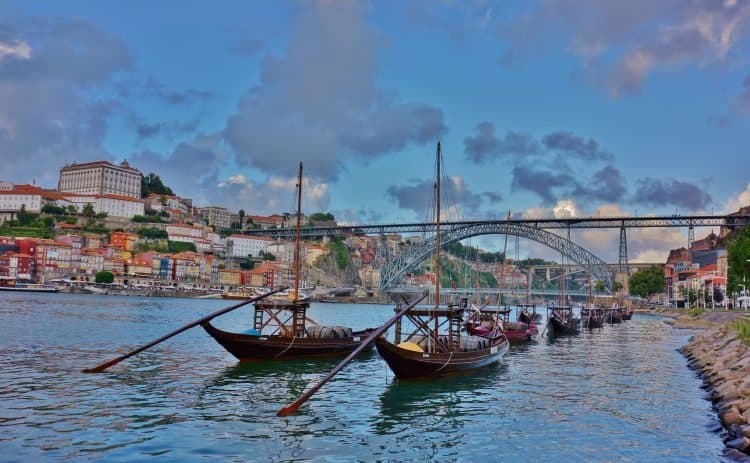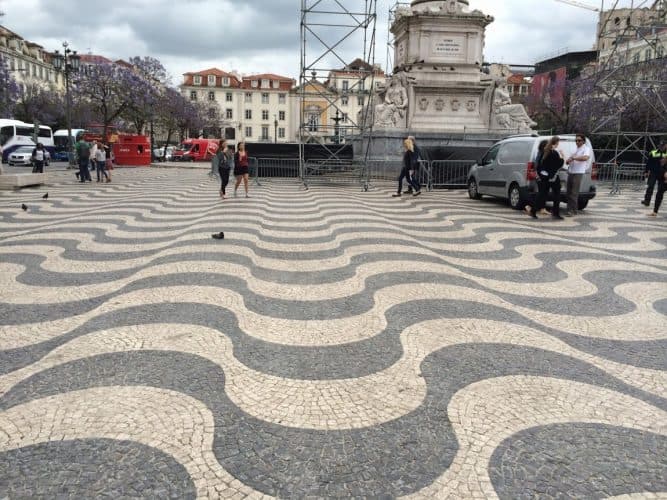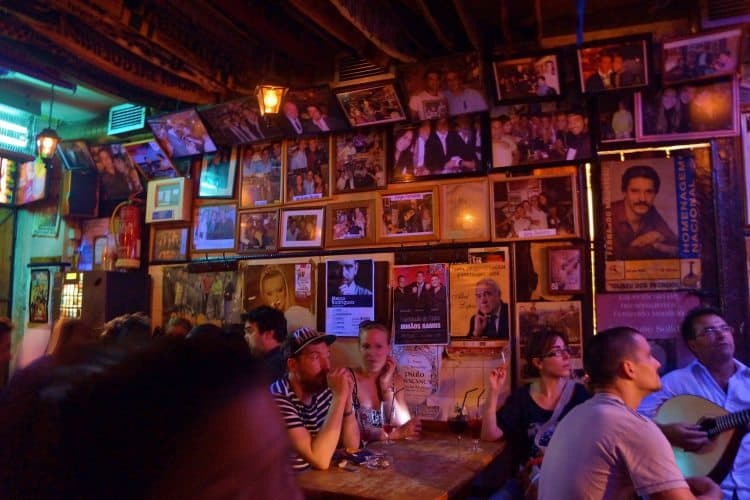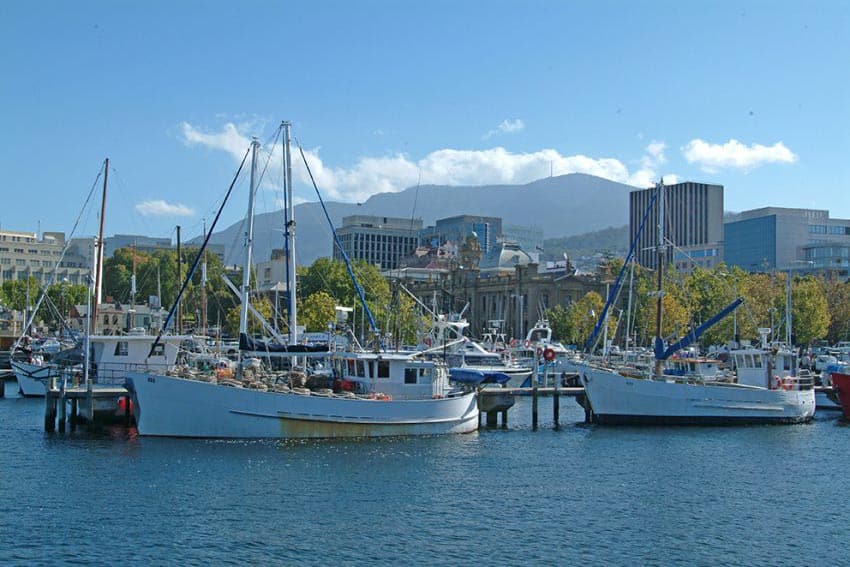
Portugal: From Porto down to the Algarve with Lisbon in Between
By Arjun Venkatesh
A road trip through Portugal with its historical monuments, gastronomical indulgences, and generous hospitality, is a celebration of centuries-old culture, society, and lifestyle.

As I drove down the stretch of the Iberian coast from which many a pioneering explorer has set sail, I hoped the celebration would never end.
Five cities, each with its distinct charm and character, opened my eyes to a once superpower, shaped over many centuries by the vicissitudes of conquest and colonization, and a proud people determined to preserve their heritage.
The plan was to start up north in, what came to be my favorite city, Porto, and navigate the country’s extensive road network through various other cities while heading south towards the beaches of Algarve.
Once a Superpower
Porto, with its narrow cobblestone streets, hidden wine bars posing as coffee shops and tanned residents often found relaxing in their balconies, seems built to be explored by foot.

The perfect way to gather your bearings in this, the second-largest city in the country, is by taking in the 360-degree panoramic view from the top of the 18th-century Clerigos church tower.
The sea of bright orange rooftops, the winding Douro river in the distance and the churches dotting the landscape, inspire exploration and leave an indelible impression of a city that is yet to be recognized as amongst the most beautiful in the world.
Many arrive into Porto by train to be welcomed by the grandeur of the Sao Bento railway station renowned for its breathtaking 40-foot walls.
These are adorned with bright blue Azulejo murals, an art form of traditional ceramic tile-work passed down through five centuries.

The murals depict past wars and ethnographic scenes and it is easy to lose oneself in the intricate details of life during Portugal’s glorious past.
The sea of bright orange rooftops, the winding Douro river in the distance and the churches dotting the landscape, inspire exploration and leave an indelible impression of a city that is yet to be recognized as amongst the most beautiful in the world.
Laid Back Locals
While exploring Porto, my enthusiastic Holas! directed at the laid-back locals, transcended cultural unfamiliarity and were often reciprocated with a warm smile and a wave of the hand, sometimes leading to more gesture-driven exchanges of pleasantries and vague directions to the riverbank.
The Douro riverbank teems with restaurants and tourists, and it offers an extensive selection of seafood, which is great for lunch.
However, dessert is best had across the Douro river in the town of Gaia, home of centuries-old Port wine cellars that offer tours and tastings, some for a mere five Euros. Palate pleasing libations aside, Gaia offers another magical experience that awakens the soul within – sunset over the Douro river.
Magnificent Backdrop

The colorful houses along the riverbank come alive under the hues of the setting sun, the Rabelo cargo boats gracefully bob up and down, as if in dance and the Dom Luis bridge acts as a magnificent backdrop to this beautiful scene.
Road trips without impromptu detours usually undermine the serendipitous nature of the experience. My drive from Porto to Coimbra, the next city on my list, was punctuated with a trip to the tiny town of Aveiro, known for its mouthwatering fare.
Leitao (suckling pig) and Ovos Moles (bite-sized egg yolk dessert that melts in your mouth) made for a memorable meal before I continued south. Coimbra’s star attraction, the University of Coimbra, which was founded in 1290 and which continues as a university to this day, is today a UNESCO World Heritage Site.
The Big Uni
Coimbra’s star attraction, the University of Coimbra, which was founded in 1290 and which continues as a university to this day, is today a UNESCO World Heritage Site.

The imposing campus grounds, overlooking the city, almost seem out of place in a world of academia, and for good reason.
It was originally built by the Moors in 994 AD and it acted as both a fortress and a symbol of the Ummayad Caliphate’s struggle against the Christians.
After the final Christian re-conquest in 1064 AD, the fortress was converted into a palace where the first king of Portugal, Afonso Henriques, set up his court in 1130 AD. It remained the home of the Portuguese Royal family through three centuries of successive rulers before becoming a university in 1537 AD.
An Incredible Library

A tour of the campus grounds, though time-consuming, was a captivating experience. The throne room of the palace, replete with portraits of Portuguese monarchs hanging from the ceiling, is now used for important university functions and lucky visitors may even witness a Ph.D. dissertation in progress.
Biblioteca Joanina, the university library, built in the 18th century on top of the old royal prison, with its gilded bookshelves over 30 feet tall, a domed ceiling painted as a gateway to the heavens and massive arches separating its three chambers, is a testament to European Baroque architecture.

The St. Michael’s Chapel built in the 15th century features a 3,000-pipe organ and the same Azulejo tile-work found at the Sao Bento station in Porto.
Despite its opulence, the university isn’t simply eye candy. It has produced notable mathematicians, economists, scientists, a Nobel Laureate in medicine and the father of the modern Gregorian calendar, Christopher Clavius.
My next stop was the dynamic city of Lisbon, the capital of the country. The extremely clean and affordable Hostel Lisbon in the Bairro Alto district was very deserving of its stellar online ratings. The views from the rooms of the Golden Gate-esque ‘25 de Abril Bridge’ and the famous ‘Christo Rei’ Christ statue are some of the best to be had in the city.
The Sadness of Fado
By night, Bairro Alto is a maze lined with bars and clubs, and it is easy to teleport your way back a few centuries by ending up in a Fado house.

Fado is a 19th-century form of Portuguese music that was borne out of the sorrow and despair from a life at sea.
It gradually grew to represent any sort of grief and today, it is a widely popular art form that thrives in nooks and corners around the country.
The Tasca Da Chico is a grungy yet intimate Fado house where beers can be had for a couple of Euros and Fadistas take turns belting out their renditions of the age-old music.
You’ll be squeezed for a place to sit and the walls are covered in tacky art, but it is this rustic ambiance that transports you back to simpler times in Portugal’s past.
During the day, bikes are available for rent to ride along the Tagus River towards the district of Belem. While an hour-long riverside bike ride may seem idyllic, the riverbank is dotted with abandoned industrial structures taking away from the potential beauty of this landscape.
However, once in Belem, I was rewarded with another UNESCO World Heritage Site, the Belem Tower which was built in 1513.
This fortress not only acted as a defensive fortification at the mouth of the Tagus river but also as a testament to the maritime successes of the early Portuguese explorers. It is an intricate structure that incorporates Manueline, Italian Renaissance and Moorish architectures and reflects the pride with which the Portuguese regard their colonial triumphs and legacy.
Jeronimos Monastery

Across from the Belem Tower, on the other side of the Avenue India, is the Jeronimos Monastery. This monastery has all the trappings of a beautiful church – stained glass portraits, an awe-inspiring altar and copious amounts of detailed artwork, some even designed as maritime objects.
However, what makes the monastery remarkable is that it houses the tomb of Vasco Da Gama, the first European explorer to reach India by sea.
It was at this church that he prayed the night before he left for India and it was somewhere by the Tower of Belem that he set sail into the vast expanse of the Atlantic Ocean.
Sitting on one of the pews and putting the timelines and historical significance into perspective was one of the highlights of my trip.
Next to the Jeronimos Monastery is the Casa Pestais de Belem bakery which serves up one of the most delectable confections I have ever tasted.
The secret recipe of Pestais de Belem, a pastry primarily made of egg yolk, has been passed down through generations and was supposedly conjured up by the clergy at the Jeronimos Monastery in the 18th century.
Though it is traditionally had with just powdered sugar and cinnamon sprinkled on top, I discovered that pairing it with a glass of cold milk makes this treat especially invigorating.
Sintra’s Castle
As part of my itinerary in Lisbon, I set aside half-a-day for a quick trip to the nearby town of Sintra to visit the Pena National Palace and the Castle of the Moors. They are both situated on a hill and offer excellent views of the coast and Lisbon in the distance.
The castle was built in the 8th century, during the Arab occupation of the Iberian Peninsula, and using the map available at the ticket office allowed me to explore the castle in an hour.
The palace, on the other hand, is sprawling and enables visitors to travel down memory lane and get a glimpse into the life of Portuguese royalty. It is built on the site of a monastery that was destroyed in an earthquake in the 18th century and it was re-designed with medieval and Islamic architectural cues.

Though the eclectic colors of the palace are a change from the grays and whites of the other historic monuments in the country, they make the palace look cartoonish and belie its historical significance.
The final leg of my road trip took me to the southernmost region of mainland Portugal, Algarve.
It is world-famous for its beaches that are just out of reach of the colder Northern Atlantic currents and ideal for vacationing in warm water.
Though there are many cities and towns to choose from, my favorite was Lagos.
The Algarve
It has a coastline that is rugged, imposing, almost bordering on magnificent and, which can be explored by sailboat. After all, when in Portugal, do as the Portuguese have done for centuries.
Another favorite pastime of the Portuguese is to beach hop, which was easy to do as the beaches are a mere five-minute drive from one another.
A typical holiday in Algarve comprises beach time from morning to noon, staying indoors from noon to 4 pm to avoid the harmful rays of the overhead sun, more beach time from 4 pm to 8 pm, and signing off with a bottle of wine and fresh sardines.
Despite all its beauty and charm, Lagos does have the dubious honor of being home to Europe’s first slave market, which was built in the 15th century. The slave market still stands today as a nondescript building and it is best visited during the wee hours of the night – the eerie stillness in the night air adds to the uncanny experience.

It compels you to appreciate, as a free man, standing at the entrance through which thousands of young shackled slaves passed into a life of unimaginable pain and horror, never reconciled to their fates.
Ending in the Algarve
I ended my trip in Algarve and flew out from Faro, an hour’s drive east of Lagos. The Portuguese are proud people who have experienced their fair share of triumphs and tribulations over the course of many centuries.
They go to great lengths to preserve and promote their historical artifacts that narrate the Portuguese story and these are made accessible to visitors.
My road trip from Porto to the Algarve lasted 10 days and cost approximately 500 Euros.
This journey down the coast of Portugal, with all its visceral indulgences, is worth making not just to celebrate the Portuguese culture, but to also unlock the wanderlust that lies within each of us.

Arjun Venkatesh has lived in 3 countries (Bahrain, Canada, and the USA) and traveled to 30. He calls San Francisco home and when he’s not traveling, he helps startups build impactful software products.
Eurail Passes: What to Know about Buying a Europe Train Pass
- Bombay from an Ex-pat Perspective - June 17, 2023
- Discovering Dearborn, Michigan - February 9, 2023
- Niagara Falls, Where Your Senses Come Alive! - August 6, 2022








Wow amazing Portugal really interesting post with photo and information. one of the interesting place to discover i like the wall painting in Sao Bento railway station must. thanks for sharing.